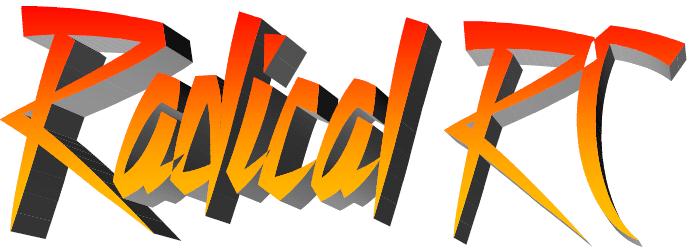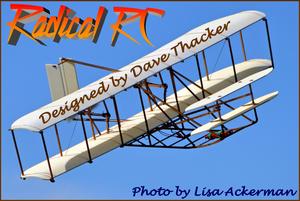Lithium Polymer Applications If they are 4.2 volts a cell when full, how do we apply that voltage? The first thing to understand is how many volts you'll need to fly your model. Lithium cells are 3 volts per cell when empty and 4.2 volts per cell when full. Generally a 2 cell lithium polymer pack will best simulate a 7 cell NiCad or 7 cell low resistance NiMH pack or a 8 cell typical NiMH pack. A 3 cell lithium is much like a 10 cell NiCad/HV NiMH or 11 cell typical NiMH. So, if you’re replacing an 8 cell 720 NiMH pack in your S-280 or S-300 Bird, we're going to need a 2 cell pack. If you’re replacing a 10 cell 600 AE NiCad pack in a 7.2V S-400 Ship, we're going to need a 3 cell pack. With NiMH or NiCad cells we can make nice small incremental jumps in our voltage. A bird that doesn't fly properly on a 7 cell NiCad 600 AE pack can often be fixed by adding a cell. How much current (amps) can I pull from a Lithium? Rather than trying to learn the individual discharge amp limits of every cell, it's a good idea to learn the "formula". It's very simple really. All of the Kokam cells listed with Radical RC can handle continuous discharge rates from 3 to 4C. "C" is capacity. So, if we pick a cell out, let’s say the 2500, we know it should perform well if we limit long full throttle current to 7.5 to 10 amp (please note, there are 1000 mAh in 1 amp) In other words, 3 or 4 X it's capacity (shown in mAh). Learn the formula, then you can look at any cell and know what to expect. An example to look at is a ZAGI, it is very common for these to be flown at or near full throttle for the full duration of the flight. If we need to support 10 amps on a constant basis we need to find a cell that when its capacity is multiplied by 3 or 4 results in 10 amps. So, the 2500x4=10000 or 10 amps, the 3300x3=9900 or 9.9 amps, 3300x4=13200 or 13.2 amps. You might ask "which is the better number to use when I multiply the capacity, 3 or 4"? Generally, if you know the model will be at absolute full throttle ALL the time, lean heavily towards the cell that when multiplied by 3 equals the current you need. If the model will see mostly high throttle, average of 80% throttle, then you can use slightly smaller cells and use the factor of 4X capacity. Can they deliver more current for shorter periods? Yes! This is the good news. Most models fall into the "Fun-Fly" or "Stunt" category. When the model gets an extreme amount of throttle control (very little full throttle and then only very short bursts) we can use a factor of 7C. An example of this is our Edge 540. On the BD301 it pulls about 8 amps from a 2 cell Li-Poly pack. Our favorite pack for this model is in the 2000 mAh range. However, we've flown in many times on an 1120 2 cell pack. Some quick math, 8amps/1.120(amp capacity of pack) =7.14. So, were flying this particular pack just over 7xCapacity or 7C! The model will still hover for 30 seconds at a shot a time and provides a very satisfying aerobatic flight. The pack works fine and no noticeable drop off. But, keep in mind this is a close in high power to weight 3D fun-fly model. The throttle is moving all the time and is seldom at full throttle for very long. Another example is an E3D. At 40 amps, we can get away with a pack in the 5700 to 7500 mAh range easily. This type of model naturally is not held at full throttle for long periods. What about my Heli? This is an interesting challenge. Unlike a fun-fly airplane, a heli has a long hard drain and the battery never gets any off time or very low throttle time. We need to pick a lithium capacity that fits in the 3-4C range for best results here. If you’re flying 10 cells now and hover current is 20 amps (20,000mah), we need a pack of 5000mah to 6600 mAh range to support this. If we want to do some more aggressive flying we need a larger pack. Bear in mind that your hover current with the Lithium pack will be reduced somewhat due to lowering the weight of your machine. If we design the pack to handle your machine at its heavy NiCad or NiMH current then we've also built in a little buffer. How much current is my Heli or Airplane pulling? Nothing beats an Astro Watt meter for taking actual static amp readings. Short of that, there is another way to figure your "Average" current. First, understand you don't get the full capacity of your pack in a flight with the only exception being very slow floaters like thermal sail planes. Let’s presume first that we only get about 90% of out capacity out most of the time. You can adjust this number if you've measured differently in your setup. Our example model has a 1700 mAh pack in it. It performs well for 8 minutes. We need to get 90% of our capacity as a starting place. 90% of 1700(1700X.9) is 1530. Now, the pack is rated in Milli-Amp-Hours. Hours is the "KEY" word here. We need to convert our 8 minutes of flight time to it's fraction of hours. 60/8=7.5. So, we're flying on 1530 mAh of energy for 1/7.5th of an hour. 1530 mAh X 7.5=11,475mah or 11.475 amps of average current. If we're flying 6 minutes on 3000 mAh cells how much is our average current? 3000 X .9=2700 mAh energy used. 60 minutes/6 minutes flying time=10 or 1/10th of an hour. 2700x10=27,000mah or 27amps average current. I've personally owned a 10 cell fun-fly model propped to 50 amps at full throttle on a 1700 size NiCad. The model would fly pretty easily (with lots of aerobatics) for 8 minutes. My average current as figured from above would have been 11.475 amps. The same model on a 3000 NiMH pack would fly about 12 minutes. Average current with the heavier pack is 13.5amps. The model pulled more current on average due the heavier pack. You might also assume I was more "careful" with the 1700 because I knew it was in the airplane and could be depleted faster. Can you figure the size and cell count of the Li-Poly pack I would need to fly the above example? Max current 50 amps on 10 cells. 50/7=7.14Amp-Per-Hour or 7140 mAh minimum pack size. This would be absolute minimum! We could make that up from 3 2500 3 cell packs in parallel (7500 mAh total capacity). We'd have voltage similar to a 10 cell NiCad or NiMH pack and would weigh about 15.75oz, about 71% of the 3000 NiMH weight. The "Average Discharge Rate Approximation" formula is (Capacity X .9) X (60 / Flight Minutes) =Average Discharge Rate in Milli-Amp-Hours. Don't be Greedy, Look for about 80%. Near the top I mention flying my Edge 540 profile model on an 1120 pack at 8 amps as a good 7C example. In truth I like the model better with about a 2000 mAh pack in it. Performance is the same but flying time is more satisfying also the high power part of the pack is much longer and overall it suits the model and "my tastes" better. Generally the best packs work out to be around 80% of the weight of the best NiCad and NiMH packs for a given application. 80% weight is just a rule of thumb, if you’re best pack is 70% or 90% of the best NiMH pack then all is well. If however, you are considering a pack that is 50% or 120% of the NiCad or NiMH pack you've got a solid indication to double check your math and be sure you’re not overlooking or miscalculating something. How do I understand Parallel and Series packs? An example of Parallel packs that probably everybody has seen is a heavy duty pickup with two 12V batteries in it. This is used to extend the electrical work capacity of heavy duty work trucks such as plow trucks and other trucks that run hydraulics or cable winches. Often a pleasure boat will have two batteries in it to make it more certain that it will start when your 10 miles off shore. The two batteries are connected negative to negative (black to black or - to -) and plus to plus (red to red or + to +). Rather obviously we know big trucks and nice boats are still 12 volt systems. When you connect batteries up negative to negative and positive to positive you increase the capacity. This is to say we can do the same job 2 X as long. The voltage stays the same. Below is a drawing of a typical lithium pack that is 2S-2P (2 in series, 2 in parallel) making the 1020 cells into an 8.4V pack of 2040 mAh capacity? An example of Series is your transmitter pack. It is probably made up of cells that are 600 mAh in capacity. If you strip off the cover you can read the actual capacity printed on the cells. These cells are connected to each other Positive to Negative to Positive to Negative and so on. When cells are connected thusly the capacity stays the same and the voltage increases. A TX pack is usually 8 cells (1.2V per cell) and 9.6V. The savvy readers will have already figured out that our truck example above also includes a "series" battery. The 12V lead acid battery in your car or truck is really 6 each 2 volt cells in series. Series and Parallel battery packs must contain all cells of exact same capacity and they should be of the same brand. If not they won't run down equally. How long does it take to charge a Lithium battery? Roughly you can figure Empty Capacity in mAh/charger output + 1/2 hour. So, if we're charging an empty 2 cell 2100 (empty is 6V) pack at 400 mAh it will take about 5 3/4 hours. If you charge at the maximum rate of Capacity X 1 then it will take about 1.5 hours. At Capacity X 1 (2100 mAh in this example) it will take about 1 hour to fill the pack to 90% and an additional 30 minutes to pack the last 10% of the charge. There is no good way to charge them faster. Lithium batteries are slower to charge than NiCad and NiMH cells then. :-( NO! Striking statement but the answer is no. It takes longer (or as long) to charge a NiMH or NiCad of similar weight and job. Remember, in electric flight, most of our successful lithium packs fly the models for roughly 3 - 10 minute flights. Our Edge 540 flies about 5 minutes on a 350 NiCad which takes 15 minutes to recharge. About 10 minutes on a 720 NiMH pack taking about 35 minutes to recharge. It flies about 30 minutes (with the same vigor!) on the 2100 Lithium which takes 1 1/2 hours to recharge. In the "flying" time it takes to run down the lithium, you've got to charge the NiCad 6 times taking about 1.5 hours, You've got to charge the NiMH 3 times taking about 1 hour and 45 minutes. So, in the real word, it takes no more time to charge a Li-poly pack than it does to charge any other type of common pack as long as the weights and jobs are similar. Yes, it takes 3x as long to charge a 720mah lithium cell as it does to charge a 720mah NiMH cell but this is minutia as the lithium and NiMH cell of the same capacity can't do the same job. We're typically running a Lithium of 3X the capacity as the best NiMH cells. Even though we can charge a NiMH cell at capacity X 2 giving a 35 minute charge and we can only charge a lithium at Capacity X 1 giving a 90 minute charge what you must remember is the Lithium pack is 3X the capacity often. In the Case of the 720 (Edge 540 example above) the max charge rate is 1.4 amps; the 2100 lithium cell can accept a charge rate of 2.1 amps! Both do the same job but the Lithium is being charged at HIGHER amperage due to it's being 3X as big. So, the lithium pack will accept 10minutes flying time worth of charge faster! I wish I could add less than 4.2 volts to a Lithium Pack. How do I match my 8 cell NiCad machine with a Lithium? You’re correct in remembering that a 2 cell Lithium is more directly related to a 7 cell NiCad. If we run a 2 cell Lithium "AND" change nothing else we'll have less power presuming the pack weight is the same. If we run a 3 cell lithium then the voltage will be so high that our current will be more than we had planned for the setup. How do we unravel this riddle? First, understand that you're probably getting a small weight reduction. This will make up for some of our reduced prop RPM form the lower voltage of the 2 cell lithium pack. What we are left with is learning to become better students of gear ratio and prop selection. It's likely you'll need to reduce the gear ratio for example, drop from 4:1 to 3.5:1 to get your RPM back where it was with the 8 cell NiCad. Another alternative (simpler) is to choose a prop with a little more pitch. If you were running a 6 pitch prop, you might get your performance back with a 7 pitch on the lithium pack. It's really not that complex but it is a concern you'll have to address more with the limited number of voltage selections in lithium packs. Improve your skills. Most of our electric models do not fly at full throttle the whole time. In fact, it is a mark of an experienced pilot to be able to make the model look good and do many different maneuvers at many different speeds. Learn to fly with throttle control. The throttle is variable. At times when I watch people I wonder if their speed controls are really like the Space Shuttle Boosters, once you turn it on it goes at full blast till it is empty. ;-) Use only what you need and you'll have much better flying models, lighter battery packs and longer flights. Some simple examples are: don't use full throttle on the down side of a loop, when you’re flying down or lowering your altitude do it with the motor off or at a reduced RPM. Take some time in your flights to do some low speed aerobatics. Practice these things a little at a time and soon you'll be showing the full range of your model's capabilities in every flight. I think you'll find it enjoyable and it will certainly enrich the quality of your electric experience.
| 



